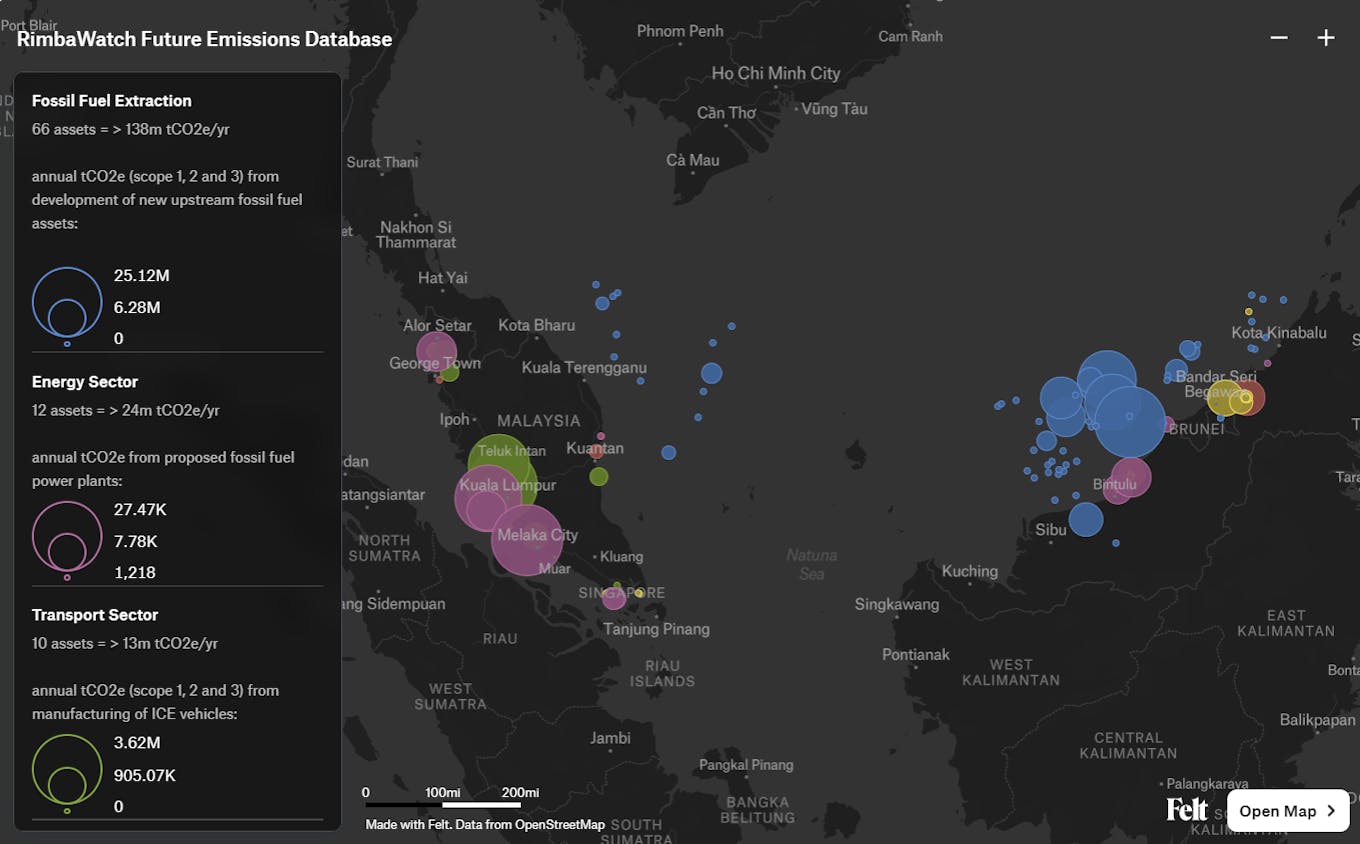If the oil and gas reserves from planned extraction projects in Malaysia, Singapore and Brunei are fully exploited, the equivalent of 9 per cent of the carbon budget for keeping global warming within safe levels will be used up, according to a new database of emissions-intensive projects in Southeast Asia.
To continue reading, subscribe to Eco‑Business.
There's something for everyone. We offer a range of subscription plans.
- Access our stories and receive our Insights Weekly newsletter with the free EB Member plan.
- Unlock unlimited access to our content and archive with EB Circle.
- Publish your content with EB Premium.
Published last Friday by Malaysian climate watchdog RimbaWatch, the database tracks the emissions from planned carbon-heavy activity such as fossil fuel extraction and infrastructure, power plants, transportation and steel and cement plants in Southeast Asia.
The climate cost of 70 fossil fuel extraction projects in Malaysia, Singapore and Brunei will amount to 9.9 gigatonnes of carbon dioxide equivalent, which besides depleting the world’s carbon budget could cause up to 2.1 million excess temperature-related deaths, RimbaWatch projected.
RimbaWatch uses annual and lifespan scope 1, 2 and 3 emissions from public company data to populate the database, which is called the Future Emissions Database. The database currently covers Malaysia, Singapore and Brunei, but the non-profit plans to include other Southeast Asian countries in a final version.
Adam Farhan, RimbaWatch’s director, said that the accuracy of emissions estimates depends on the companies’ disclosures and other public information such as reports by the Intergovernmental Panel on Climate Change.
For example, to calculate Malaysian oil and gas giant Petronas’ Scope 1 and 2 emissions, RimbaWatch derived activity data published by Petronas via the emissions intensity of their products.
“While that may be limiting in the context of making general estimates of carbon lock-in from proposed assets in Southeast Asia, it’s fairly credible”, said Farhan.
Using data to cancel high-emissions projects
Assessments of the carbon cost of proposed projects have not been made before in Southeast Asia. Emissions from current assets have been technically reported on in Malaysia’s Fourth Biennial Update Report to the UN Framework Convention on Climate Change.

The interactive map from the RimbaWatch Future Emissions Database [click to enlarge]. Image: RimbaWatch.
RimbaWatch aims to use the database to provide a clearer view of the cumulative impact of carbon-intensive projects on Malaysia’s ability to meet its Nationally Determined Contributions to the Paris climate accord, and for Malaysian companies to meet their climate targets. The watchdog hopes that the database can be used to advocate for the cancellation of high-emissions projects before they happen.
Companies are also allowed full access to the publicly-consulted formulas used in the database for their own calculations.
According to Farhan, the emissions tracker will include land reclamation and urban highway projects but they are currently finalising their formulas to minimise double counting.
Evidence to counter greenwashing
The preliminary analysis of the database is part of the non-profit’s upcoming report that pits Southeast Asian companies with the highest carbon emissions potential against their country’s climate targets.
RimbaWatch told EcoBusiness that it intends to use the database as evidence to hold accountable Petronas’ 2050 net-zero carbon emissions goal. According to a UN High-Level Expert Group Report, non-state organisations, including Petronas, cannot claim to be net zero while continuing to expand fossil fuel production.










